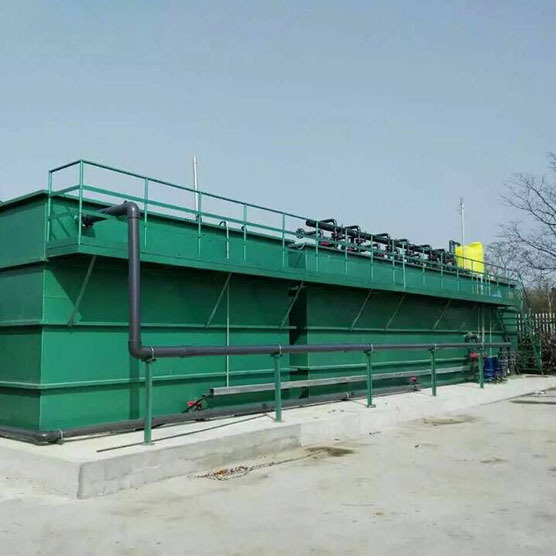MBR wastewater treatment is an advanced treatment process that has become increasingly popular these years. The MBR systems can be widely seen in wastewater treatment plants. They are applicable to many sectors, including municipal, industrial, and water reclamation. You may not fully know these systems. This blog will provide a simple guide for you.
What Is An MBR System?
An MBR system ( membrane bioreactor system) is a wastewater treatment process that combines membranes with biological processes. Membrane bioreactors are very popular for industrial and municipal wastewater treatment. They can handle up to 48 million litres of wastewater per day. The combination of membrane filtration and suspended growth bioreactor can effectively remove organic and suspended solids.
The MBR system differs from traditional activated sludge (CAS) systems in that it does not use a secondary clarifier or settling tank, which allows the solids to settle and separate them from the liquid. Instead, membranes are utilized for this purpose. This can improve water quality.
Membrane bioreactors were an innovative invention in the 1960s to replace settling tanks. However, the costs were high because of the high price of membranes, especially because the process become greatly less effective due to membrane fouling. In 1989, these membranes were submerged in the bioreactor, and their energy consumption was reduced by two orders of magnitude compared to before the breakthrough, with a lower flux, but a larger membrane area. Another improvement in MBR system is the introduction of two-phase bubbly flow to control fouling.

Bioreactors:
A bioreactor is any device or system that supports a biologically active environment.
It can be aerobic or anaerobic.
Bioreactors can be divided into two categories:
1. Biofilm bioreactors
2. Suspended growth bioreactors
Membranes:
Membranes are two-dimensional screens utilized to physically separate particles from a liquid.
The membranes are utilized for liquid-solid separation. They can be semi-permeable or perm-selective, which means that they only allow certain particles to pass, and even choose which particles to allow. Membranes can be used for microfiltration or ultrafiltration, based on how big the particles that they allow to undergo them.
There are 5 types of membrane configurations for MBR system:
1. Plate and frame
2. Pleated filter cartridge
3. Tubular
4. Hollow fibre
5. Spiral wound
The membrane does not allow solids produced by biological processes to pass with water.
What are the advantages of MBRs?
It is widely believed that MBR technology has many advantages over other wastewater treatment technologies - although this is not to say that the membrane bioreactors are always the right choice and many factors need to be considered. But, in general, the MBR system:
Decouple HRT and SRT
Produce high-quality wastewater
Have a small footprint
Provide better biological processing
1.Uncoupling HRT and SRT
The SRT (solids retention time) is an integral parameter in biological wastewater treatment. Increasing the SRT (or the time that the biological solids remain in the bioreactor) increases the concentration of the biological solids.
An obvious advantage of the membrane bioreactor process is that the biological solids, such as mixed sludge or liquid, are fully retained in the bioreactor. This usually means that the SRT in the bioreactor can be controlled independently of the HRT (hydraulic residence time).
This differs from the CAS process, in which the size of the flocculant solids ("flocs") that constitutes the biomass must be increased to the extent that it can settle in the secondary clarifier. Therefore, in a CAS system, HRT and SRT are coupled because the size of floc and its settability are related to HRT: increasing HRT will increase the time for floc to grow in the bioreactor, thus increasing its settability.
2.High-quality effluent
Membranes have a very small pore size (<0.5 μm). This means that, compared to CAS technology, MBR technology can bring about better treated wastewater with higher purity and lower pathogen concentration.
The MBR process provides sufficiently high-quality, substantially purified and disinfected wastewater that can be discharged into sensitive receivers or recycled for applications such as urban irrigation, utilities, or toilet flushing. The wastewater treated by MBR system is also high-quality enough to be used directly in reverse osmosis processes.
3. Small footprint
The increase in the retention time of solids in the reactor, as well as the higher biomass solids concentration due to the increase in SRT, affects the footprint of the plant. Increased concentration means that the same total solid mass is contained in a smaller volume, so the footprint is smaller.
4. Better biotreatment
Finally, longer solid retention times tend to provide better overall biological processing. These conditions encourage the development of slower-growing microorganisms, especially the development of nitrifiers. The MBR process is particularly effective at biologically removing ammonia ("nitrification").
If you want to know more, you can contact us. Jinwantong is an expert in MBR wastewater treatment and is very glad to answer you questions.

